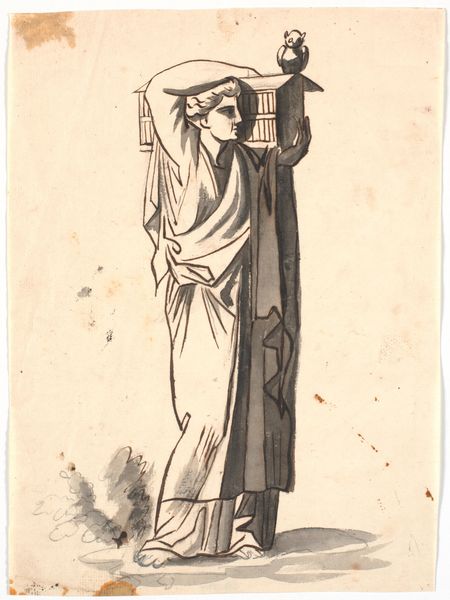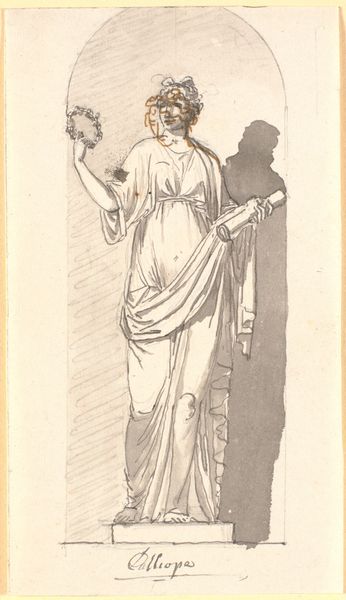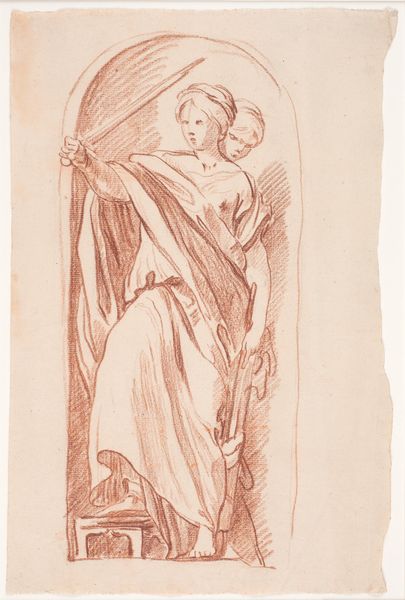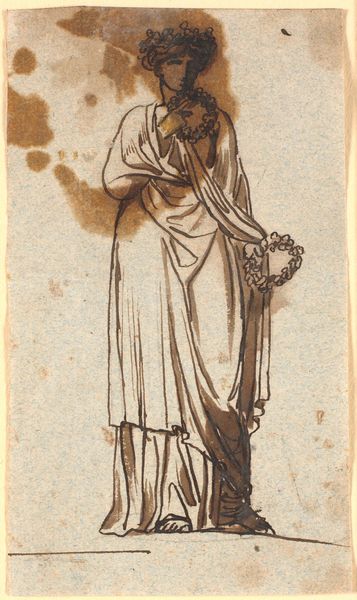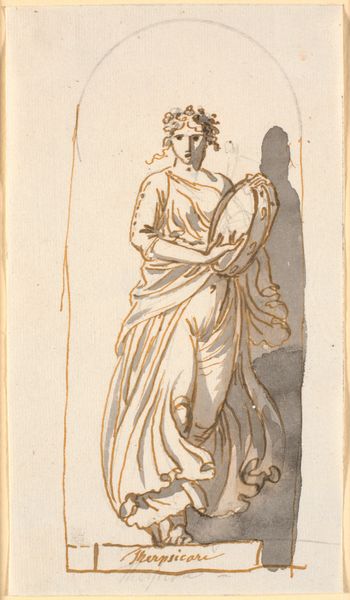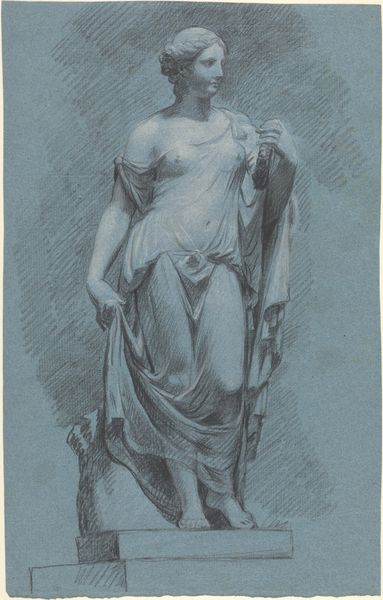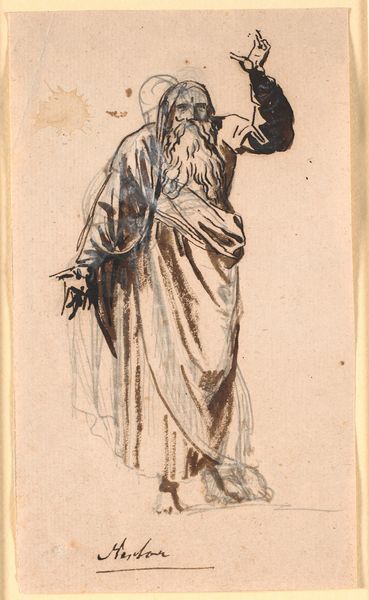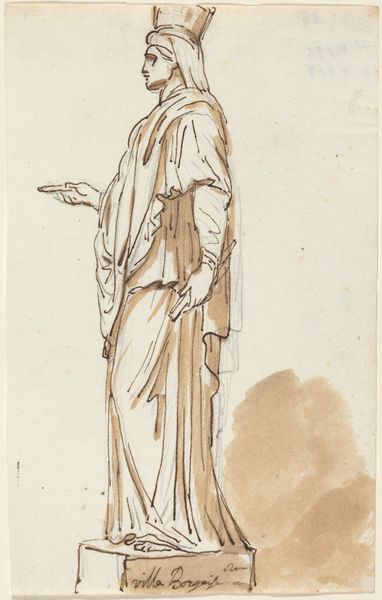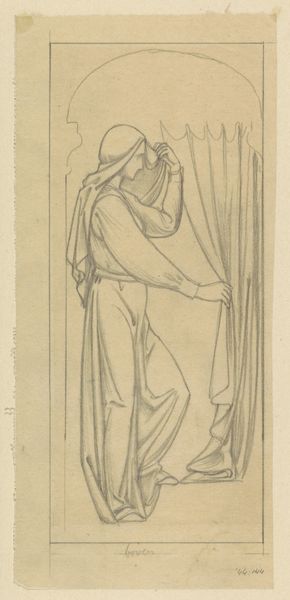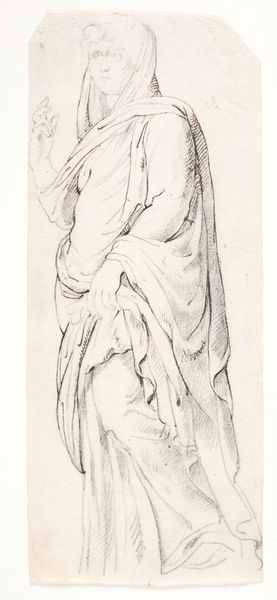
Polyhymnia, hymnedigtningens muse, som statue i en niche 1792 - 1795
0:00
0:00
drawing, ink, pen
#
portrait
#
drawing
#
neoclacissism
#
figuration
#
ink
#
pen
#
history-painting
Dimensions: 211 mm (height) x 118 mm (width) (bladmaal)
Curator: Here we have Nicolai Abildgaard's "Polyhymnia, hymnedigtningens muse, som statue i en niche" from 1792-1795, residing here at the SMK. Editor: It’s a somber piece, isn't it? The figure, a classical sculpture in a niche, is rendered in such muted tones—primarily pen and ink—that it projects a real sense of quiet reflection, even melancholy. Curator: Indeed. The choice to depict Polyhymnia, the muse of sacred poetry and eloquence, as a statue speaks volumes about the neoclassical ideal of embodying abstract concepts in idealized, enduring forms. Note how Abildgaard uses her as a cultural artifact referencing a golden age. Editor: Right, but even a cultural artifact is made with physical means. I'm struck by the contrast between the subject matter – a muse, representing lofty artistic ideals – and the mundane materials used: pen and ink on paper. I imagine Abildgaard hunched over a desk, painstakingly creating this image by hand. Curator: That very process enhances the connection to the past, wouldn't you say? He’s invoking not only the classical form, but the historical act of creation, channeling these eternal figures through his own hand. Editor: I see your point, but it's a paradox, isn't it? We're presented with this image of timelessness – the enduring statue – yet it's rendered using humble, decidedly *not* eternal materials. And the lines themselves are so immediate, almost hurried in places. I wonder, was this intended as a study for a larger work, or something to be quickly consumed by another art academy? Curator: Likely a study, given the medium. Yet, there's still such detail in her drapery and expression! And she holds that scroll – it’s the very embodiment of artistic contemplation, of pondering words and meanings. That wreath above her brow and slightly parted lips suggests creative, spoken divinity. Editor: Spoken divinity made physical with humble lines and washes. Knowing the drawing materials makes her divinity seem…earthbound somehow. Ultimately, seeing these elements together humanizes this Neoclassical form – something more like human genius emerging with the use of simple tools. Curator: Precisely, the materials and forms serve as a conduit through which we might access that sense of antiquity, even divine inspiration, here and now. Editor: A clever commingling that creates the work's enduring charm, I think.
Comments
No comments
Be the first to comment and join the conversation on the ultimate creative platform.

